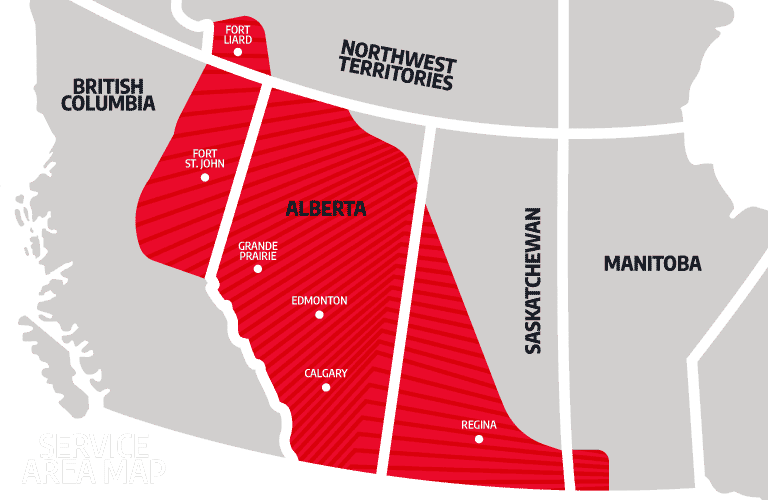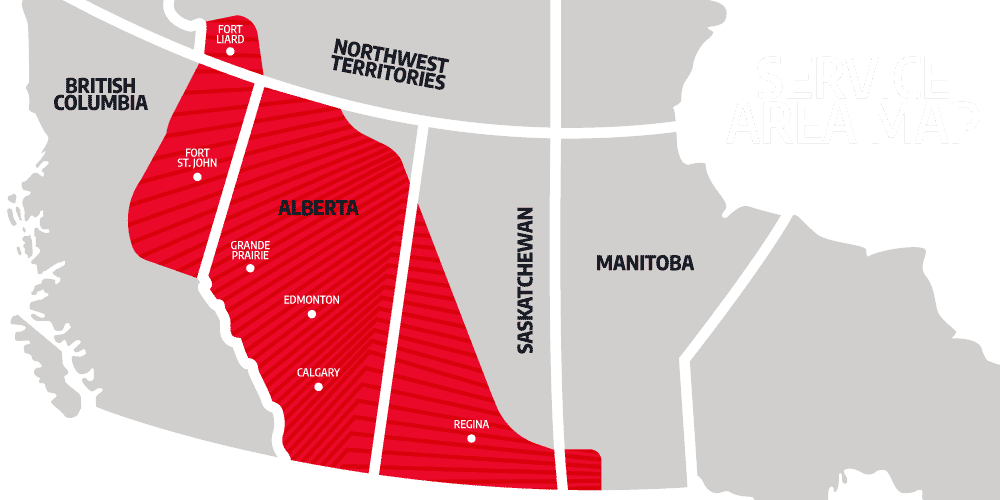Pneumatic Controls Measurement
Surface Solutions applies a unique approach to capturing vented emissions on each well site using patented technology and a niched set of skills. Producers across Western Canada get the most accurate results in determining .17m3 per hour of emitted vent gas, basing their actions on strategies that utilize our vent measurement devices.
A pneumatic controller is a device designed to measure temperature or pressure and transmit a corrective air signal to the final control element. Pneumatic controllers are one of the universal emission sources at oil and natural gas production facilities.
When working as expected, pneumatic controllers emit natural gas when executing liquid level, temperature, pressure, and other production process control functions.
Pneumatic controllers of different types and use applications have varying natural gas emission potentials. Core application pneumatic controllers, such as liquid level/dump valves on high-producing wells, may actuate frequently and produce considerable emissions, even when operating as intended.
In safety applications, such as an emergency well shut-in device, pneumatic controllers are designed to actuate infrequently and may produce low emissions when properly operating.
When a typical pneumatic controller senses the need for a process change, it will open or close a control valve, and gas is released from the combination of the Pneumatic controller pilot, the valve bonnet, and the volume of the tubing connecting the two.
Pneumatic Controllers are often used for maintaining a simple mechanical process or condition such as pressure, temperature, or liquid level. In general, pneumatic controllers cover the following:
Emergency response device
- Flow rate controller
- Liquid level controller
- Control valve positioner
- Pressure controller
- Process and temperature controller
- An energy transducer
The oil and gas industry uses pneumatic devices to take measurements and control processes, usually by sending a message to a valve to adjust its position.
What Is A Pneumatic Controller
Pneumatic controllers can use gas pressure to control the operation of mechanical devices, such as valves. The valves, in turn, control process conditions such as levels, temperatures, and pressures. When a pneumatic controller identifies needing to change liquid levels, pressure, temperature, or flow, it opens or closes a control valve.
When a pneumatic controller opens or closes a valve, gas is released. Pneumatic pumps are generally used at petroleum oil and natural gas production worksites where electricity is not readily available. The gas for these pumps can be compressed air, but most use natural gas from the production stream.
If the controller uses natural gas as its supply gas, methane is emitted when the gas is discharged. Pneumatic pumps are devices that use pressure to drive a fluid by increasing or decreasing the pressure of the fluid utilizing a positive displacement, a piston, or a set of revolving impellers.
Pneumatic Devices, Controls, and Pumps
Pneumatic devices can be powered by natural gas, compressed air, or propane. However, natural gas is the most popular choice because of its price and availability. Gas-driven pneumatic devices have also become the standard in the industry because of their simplicity, reliability, and lack of available electricity in many locations.
Regulators have targeted natural gas-driven pneumatic devices due to their innate nature to release methane emissions. When working correctly, part of the gas power stream flows to a valve actuator controller, which vents into the atmosphere.
Pneumatic Controllers
- Process control devices are found throughout the oil and gas value chain as part of the instrumentation to control the position of valves and may be actuated using natural gas.
- Types of service include safety shut-down, position, fluid level, pressure, temperature, and flow rate.
Pneumatic Pumps
- Chemical injection pumps inject small volumes of chemicals into wellheads and gathering lines.
- Diaphragm pumps are positive displacement pumps moving larger volumes of liquids.
There is a need to perform process control functions on upstream oil and gas sites. Facilities in all sectors tend to automate control functions for the safety and efficiency of operations. Many oil and gas sites are remote, and natural gas is an available working fluid with enough motive force to enable these control functions to happen reliably.
Remote Automated Control
According to a 2016 methane study, Alberta had 1,688 pneumatic devices inventoried in a 397 oil and gas wells survey. Surface Solutions applies a unique approach to capturing vented emissions on each well site. A major player in the remote, automated control of natural gas and petroleum industry facilities is the operation of control valves powered 100% by natural gas through pneumatic controllers.
Several natural gas-powered pumps are used for injecting chemicals and other purposes. Some types of this equipment release or “bleed” natural gas into the atmosphere. In addition to the emissions released by design, pneumatic controller loops and pumps can release gas because they have a defect or need maintenance. Recent field measurements have pointed out that a large fraction of total emissions from pneumatic devices results from devices not operating as designed.



